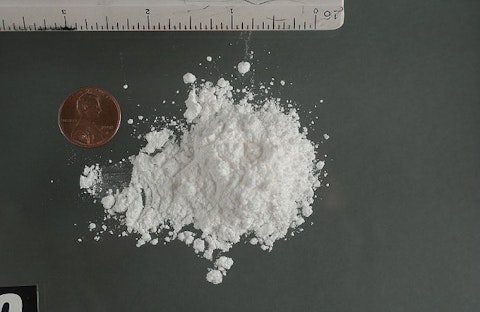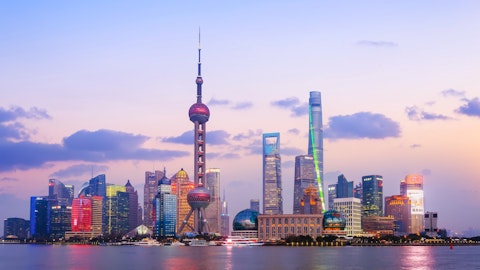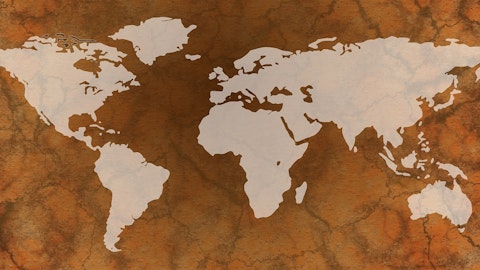In this article, we will look at 10 countries that produce the most illegal drugs.
Drug abuse is a major problem in the United States. The National Center for Drug Abuse estimates that every year 96,700 people die from drug abuse in a year in America. This includes death from an overdose of illegal and legal drugs which are used for recreational purposes. The severity of America’s opioid crisis can be seen by the fact that nearly seven out of ten drug-related deaths are caused by opioids. Substance abuse in the United States is also detrimental to its economy. It costs the country approximately $3.73 trillion each year. This cost includes both tangible and intangible expenses related to drug abuse. The Federal Government spends $20 billion every year on interventions to try to reduce drug consumption. These intervention strategies include crop eradication in Columbia and mass media prevention programs targeted toward preteens and their parents. Nearly half of the people in the United States who turn 21 have experimented with illicit drugs. Today, however, fewer younger people are starting to use drugs compared to the recent past, and the population of cocaine, heroin, and methamphetamine-dependent people is declining slowly. Yet, given the severity of the problem, more needs to be done as drug abuse wreaks havoc on American society.
Drug abusers are a danger to themselves and others. In 2007, 38,371 people died of drug-induced causes in the United States. In 1999, drug-induced deaths were 6.8 deaths per 100,000 people, which increased to 12.6 per 100,000 in 2007. Another shocking fact regarding drug abuse in the United States is that in every 15 minutes, one drug-induced death occurs in the country. Drugged driving is also a menace to road safety in the country. According to the National Roadside Survey in 2007, one in eight nighttime drivers tested positive for at least one illegal drug. According to a self-report survey in 2009, 10.5 million Americans reported driving under the influence at least once in the past year. In addition, one in three drivers, killed in motor vehicle accidents, were tested positive for drugs.
Drug abuse is a global problem. The number of people who use drugs is nearly equal to the population of the United States, which is one of the most populous nations in the world. In addition, the number of drug abusers aged between 15 and 64 years increased by 26% from 2010 to 2020 compared to the decade that ended in 2010. When we compare this figure with the population growth of 13% during the same period, we can see that a higher proportion of people are using illicit drugs. Drug abuse is associated with poorer life satisfaction and mental and physical health. It is also quite costly for countries as they not only incur increased expenses but also lose tax revenues because of the unproductive lifestyle of hard drug users. In addition, drug abuse is closely related to criminality. Drug users frequently commit crimes to pay for their drugs. According to research in 2010, 70% of male prisoners in the United States were drug abusers. Drug abuse increases crime and, at the same time, increases costs to the government associated with incarcerations.
The illegal drug industry affects many people who do not use drugs themselves. It is one of the cruelest industries in the world. Mules from developing and developed countries are frequently exploited to smuggle drugs. Meanwhile, cartel wars have wreaked havoc in countries such as Mexico and Columbia, where drug kingpins fight for their market control. In the midst of it all, ordinary citizens who have no connection to the illegal drug industry get caught up.
The global illicit trade of drugs involves cultivation, manufacturing, distribution, and sales. While our list only focuses on the major illegal drug-producing countries, drug production is just one piece of the puzzle. Annually, 430 to 450 ton of heroin flows into the global heroin market, out of which 380 ton is produced by the opium grown in Afghanistan. The main heroin trafficking corridors for Afghanistan are the Balkans and northern routes, which connect Afghanistan to huge markets such as Russia and Western Europe.
Cocaine, on the other hand, is quite popular in North American markets. It is typically transported from Colombia to Mexico or to Central America by sea, from where it enters American and Canadian markets. Colombia is also the major source of cocaine found in European markets.
With that backdrop, let’s look at the ten countries that produce the most illegal drugs in the world. Our list will also delve into some details about the major drug produced by each country and how it reaches to world’s markets from there.

Pixabay/Public Domain
Methodology
To curate the list of 10 countries that produce the most illegal drugs, we relied on information from the US Department of State. However, we were not able to extract exact figures of how much illegal drugs each country produces. Since exact figures of illicit drug production cannot be calculated, because much of it happens under the radar, we relied on multiple trusted sources on the internet for estimates. Some countries lead in terms of illegal herb production, while others rank higher in the production of illegal drugs. To simplify our research, for each country, we selected its major illicit drug or herb. Then we ranked each country according to the estimates of how much of its major illegal drugs or herb it produces.
10 – India
Major Drug or Illicit Herb – Cannabis
Major Drug or Illicit Herb Production – 240 Ton
Although India is far behind other countries in terms of the production of illegal drugs and herbs, the country still produces a sizeable quantity of cannabis, making it one of the top ten countries that produce illegal drugs. Cannabis has been growing in Himachal Pardesh for decades, and those in favor of its cultivation often point out the licit uses of hemp. However, despite that, much of the cannabis grown in the country is used for illicit drug trade and consumption within the country. India also grows a sizeable amount of opium. However, much of the opium is used for licit purposes as India remains the only country to produce opium gum for medicinal purposes. The farms that produce opium for legal purposes also produce it for illegal trade since it gives a higher return on their investments.
9 – Nigeria
Major Drug or Illicit Herb – Cannabis
Major Drug or Illicit Herb Production – 500 Ton
Although Cannabis is a heavily criminalized plant in Nigeria, the country is 9th on the list of countries that produce the most illegal drugs. These plants give a good return on investment to the farmers of Nigeria who live in a dwindling economy. According to the United Nations Office on Drugs and Crime (UNODC)’s 2019 Cannabis survey, an estimated 8900 hectares of cannabis plantations were found in six Nigerian states. Cannabis production in the country is concentrated in the southwestern states. In addition to being one of the largest cannabis producers, Nigeria is also a key transit hub for global cocaine trafficking. The country serves as a transit route for drugs reaching the Gulf of Guinea.
8 – Peru
Major Drug or Illicit Herb – Cocaine
Major Drug or Illicit Herb Production – 785Ton
Peru is one of the largest manufacturers of cocaine. The country is rich in cocoa plantations, which are used in the manufacture of cocaine. Despite efforts from the Peruvian government to curtail cocaine production, coca leaf cultivation in the country reached a record high in 2022. According to Peru’s anti-drugs commission, 95,000 hectares of land were being used to cultivate cocoa leaves. Although the cultivation of cocoa leaves is legal, according to the authorities, 90% of Peru’s coca plantation is used to make cocaine.
7 – Myanmar
Major Drug or Illicit Herb – Opium
Major Drug or Illicit Herb Production – 795 Ton
Myanmar has recently stepped up as one of the largest opium manufacturers. According to the United Nations, the country’s opium production nearly doubled in 2022, reaching a nine-year high. According to UNODC’s 2022 Opium survey, there has been an increased sophistication of farming practices and concentration of opium poppy cultivation. Amidst the political tension and weak economy, opium gives Myanmar’s farmers a good return on investment, which has recently resulted in unprecedented growth of the herb.
6 – Philippines
Major Drug or Illicit Herb- Heroin
Major Drug or Illicit Herb Production – 1500 Ton
The northern region of Luzon acts as a significant hub for drug production in the Philippines. The region has mountainous terrain, which provides an ideal environment for the cultivation of opium poppies. `Heroin is transported from the Philippines through the rest of the world through complex trade routes. The heroin enters neighboring countries like Malaysia and Indonesia through maritime routes and porous borders. The Philippines is in proximity to major shipping lanes, which comes in handy in transporting these narcotics from across the border. A significant portion of heroin produced in the country also reaches global markets.
5 – brazil
Major Drug or Illicit Herb – Cannabis
Major Drug or Illicit Herb Production – 2000 Ton
Brazil is one of the top five countries that produce the most illegal drugs. Cannabis is largely produced in the remote areas of the country, such as the hinterlands of northeastern Brazil and the Amazon rain forest. These areas are difficult to monitor and provide the perfect climate for the growth of cannabis plants. A small portion of cannabis produced in the country is consumed locally, while the rest makes its way to the global and North American markets through neighboring countries.
4 – Afghanistan
Major Drug or Illicit Herb – Opium
Major Drug or Illicit Herb Production – 6200
Afghanistan is the largest producer of opium, which is used throughout the world to make drugs such as heroin. The southern and western regions of Afghanistan, which include the provinces of Helmand, Kandahar, and Badakhshan, are the primary regions for opium cultivation in the country. Although Afghan opium follows several routes to end up in the global market, its southern route is the most prominent. The opium is smuggled through neighboring Pakistan to Iran, from where it ends up in the global market through a network of smugglers who take advantage of porous borders and rugged terrains.
3 – Bolivia
Major Drug or Illicit Herb – Cocaine
Major Drug or Illicit Herb Production – 10000
Bolivia is the second largest producer of cocaine. Cocoa, the primary raw material in cocaine, is grown in the Yungas and Chapare regions of the country. The growth of the cocoa plant itself is not illegal, but the majority of plantation is being done to produce cocaine. The country has porous borders with neighboring countries such as Brazil and Peru, which aids in the illegal trafficking of cocaine.





